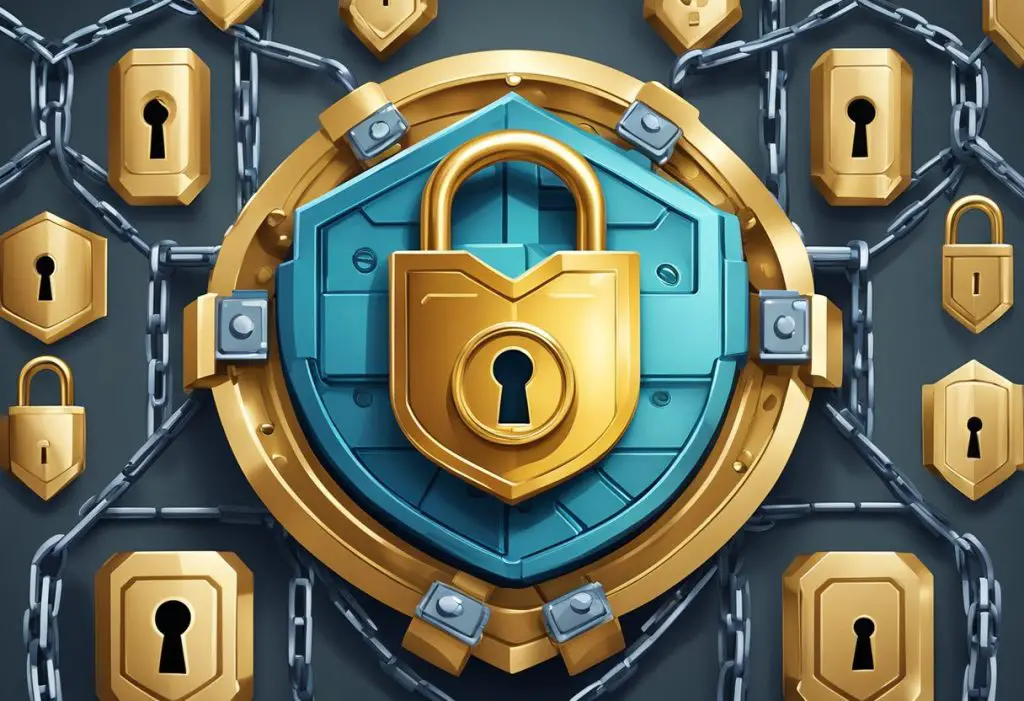Table of Contents
Introduction to Blockchain Security Features
Blockchain technology has revolutionized the way data is stored and transferred, with its decentralized nature providing a level of security that traditional centralized systems cannot match. However, as with any technology, there are potential vulnerabilities that must be addressed to ensure the integrity and security of the blockchain network. This is where blockchain security features come into play.
Understanding Blockchain Technology is crucial to understanding blockchain security features. At its core, blockchain is a distributed ledger that records transactions in a secure and transparent manner. Each block in the chain contains a cryptographic hash of the previous block, creating an immutable record that cannot be altered without detection. This decentralized nature of blockchain makes it difficult for hackers to compromise the network, as they would need to gain control of a majority of the nodes in the network to do so.
Security Features of Blockchain are designed to further enhance the security of the blockchain network. These features include cryptographic algorithms, digital signatures, and consensus mechanisms that ensure the integrity of the data stored on the blockchain. By implementing these security features, blockchain networks can reduce the risk of attacks and fraud, making them a reliable and secure way to store and transfer data.
Key Takeaways
- Blockchain technology is a decentralized ledger that provides a high level of security.
- Security features of blockchain include cryptographic algorithms, digital signatures, and consensus mechanisms.
- Implementing blockchain security features can reduce the risk of attacks and fraud.
Understanding Blockchain Technology

Blockchain Security Features Image 1
Blockchain technology is a revolutionary innovation that has gained immense popularity in recent years. It is a decentralized and distributed ledger technology that enables secure transactions without the need for intermediaries. The technology is based on three main features: decentralization, cryptography, and consensus mechanisms.
Decentralization and Distributed Ledger
Decentralization is the core feature of blockchain technology. It means that there is no central authority or intermediary controlling the transactions. Instead, the transactions are validated and recorded by a network of nodes. These nodes are connected to each other through a distributed ledger, which is a public database that records all the transactions.
Cryptography and Transactions
Cryptography is another crucial feature of blockchain technology. It is a technique that uses mathematical algorithms to secure the transactions. Each transaction is encrypted with a unique digital signature, which ensures that only the intended recipient can access the transaction data.
Consensus Mechanisms
Consensus mechanisms are the third essential feature of blockchain technology. They are the rules that govern how the nodes in the network agree on the validity of transactions. There are different consensus mechanisms, such as Proof of Work (PoW), Proof of Stake (PoS), and Delegated Proof of Stake (DPoS). These mechanisms ensure that the transactions are valid and prevent double-spending.
In summary, blockchain technology is a decentralized and distributed ledger technology that uses cryptography and consensus mechanisms to secure transactions. It has various applications in different industries, including finance, healthcare, and supply chain management. There are two types of blockchains: public and private. Public blockchains are open to everyone, while private blockchains are restricted to a specific group of users.
Security Features of Blockchain

Blockchain Security Features Image 2
Blockchain technology offers several security features that make it a popular choice for secure data storage and transaction. Here are some of the key security features of blockchain:
Immutability and Transparency
One of the most significant security features of blockchain is its immutability and transparency. Once a block is added to the blockchain, it cannot be altered or deleted, making it tamper-resistant. This feature ensures that all transactions are recorded accurately and transparently, making it easy to trace any fraudulent activity. The immutability and transparency of blockchain also enable users to verify the authenticity of transactions without the need for a trusted intermediary.
Security Measures Against Attacks
Blockchain technology employs several security measures to protect against attacks, including 51% attacks, Sybil attacks, and phishing attacks. Consensus algorithms, such as Proof of Work and Proof of Stake, ensure that all nodes in the network agree on the validity of transactions. Zero-knowledge proofs and hash functions are also used to ensure the authenticity of transactions and protect against unauthorized access.
Identity and Access Management
Identity and access management is another critical security feature of blockchain. Blockchain technology enables users to control their digital identities and access to their data. This feature ensures that only authorized users can access data on the blockchain, protecting against data breaches and unauthorized access. Additionally, blockchain technology enables users to share data securely without compromising their privacy.
In conclusion, blockchain technology offers several security benefits, including immutability, transparency, and identity and access management. These features make it a popular choice for secure data storage and transaction.
Challenges and Best Practices in Blockchain Security

Blockchain Security Features Image 3
Common Vulnerabilities and Exploits
Blockchain technology has brought about a paradigm shift in the way data is stored and transactions are conducted. However, the technology is not immune to security issues, and there have been several instances of security breaches in the blockchain space. Some of the common vulnerabilities and exploits include phishing attacks, network attacks, cryptojacking, rug pulls, 51% attacks, and more. To mitigate these risks, it is crucial to adopt best practices in blockchain security.
Governance and Compliance
Governance and compliance are critical aspects of blockchain security. The decentralized nature of blockchain technology makes it challenging to enforce compliance and governance policies. However, it is essential to have a robust governance model in place to ensure that the blockchain ecosystem operates in a secure and compliant manner. This includes having clear policies and procedures for key management, access control, and risk management.
Developing a Robust Security Posture
Developing a robust security posture is crucial to ensuring the security of blockchain networks. This includes conducting regular security audits, implementing endpoint security measures, and establishing a security consulting program. It is also important to have a strong development process in place, which includes security testing and bug bounty programs. Additionally, cryptographic keys must be managed effectively to prevent unauthorized access to the blockchain network.
In conclusion, blockchain technology has revolutionized the way transactions are conducted, but it is not immune to security issues. To ensure the security of blockchain networks, it is crucial to adopt best practices in blockchain security, including governance and compliance, developing a robust security posture, and mitigating common vulnerabilities and exploits. By doing so, organizations can protect themselves against cyber threats and ensure the integrity of their blockchain networks.
Frequently Asked Questions

Blockchain Security Features Image 4
How can blockchain technology enhance data security?
Blockchain technology can enhance data security in several ways. First, it employs a distributed ledger system that ensures that data is recorded and stored across a network of computers, making it difficult for cyber criminals to tamper with or corrupt the data. Second, blockchain technology uses cryptographic algorithms to ensure that data is encrypted and secure. Finally, blockchain technology is designed to be transparent, allowing users to track and verify the authenticity of data.
What are the primary security goals of blockchain?
The primary security goals of blockchain are confidentiality, integrity, and availability. Confidentiality ensures that data is only accessible to authorized users. Integrity ensures that data is not tampered with or corrupted. Availability ensures that data is accessible and usable when needed.
Which cryptographic principles are employed in blockchain to ensure data integrity?
Blockchain employs several cryptographic principles to ensure data integrity. These include hash functions, digital signatures, and public-key cryptography. Hash functions are used to generate unique digital fingerprints of data, while digital signatures are used to verify the authenticity of data. Public-key cryptography is used to encrypt and decrypt data, ensuring that only authorized parties can access it.
In what ways do blockchain platforms mitigate the risk of cyber attacks?
Blockchain platforms mitigate the risk of cyber attacks in several ways. First, they use a distributed ledger system that makes it difficult for attackers to tamper with or corrupt data. Second, they use cryptographic algorithms to ensure that data is encrypted and secure. Third, they use consensus mechanisms to ensure that all participants in the network agree on the validity of transactions.
What security measures are recommended for blockchain applications in enterprise environments?
To ensure the security of blockchain applications in enterprise environments, it is recommended that organizations implement strong access controls, regularly monitor and audit their networks, and use secure coding practices. Additionally, organizations should consider implementing multi-factor authentication and encryption to protect sensitive data.
How is consensus achieved and maintained securely on a blockchain network?
Consensus is achieved and maintained securely on a blockchain network through a process known as mining. Miners compete to solve complex mathematical equations, and the first miner to solve the equation is rewarded with cryptocurrency. This process ensures that all participants in the network agree on the validity of transactions, and that the network is secure and tamper-proof.

